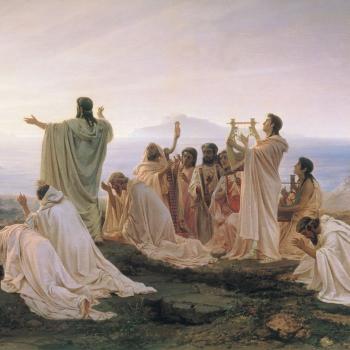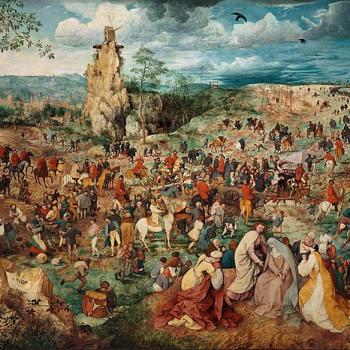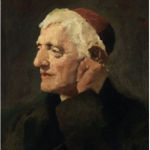
“Christ’s Appearance to Mary Magdalene after the Resurrection” (Alexander Ivanov [1835])
Wikimedia Commons public domain image
No! This painting suggests a coolness and a distance that, according to the actual Greek text, weren’t there between Mary Magdalene and the resurrected Jesus.
Χριστός ἀνέστη!
Ἀληθῶς ἀνέστη!
In Greek, which is the original language of the New Testament — and in equivalent phrases in other languages influenced by Greek Orthodox usage — it is customary to greet one another on Easter Sunday with the phrase Khristos anesti! To which the traditional response is Alithos anesti!
Christ is risen!
Truly, he is risen!
I offer, yet again, part of an Easter reflection that I wrote back in 2012 (just a week or so after the entirely unexpected death of my beloved only brother, my only sibling, the last surviving member, besides myself, of my nuclear family, which devastated me). In this passage from that brief article, I offer a re-reading — in my judgment, a very important one — of the story of Mary Magdalene’s encounter on that first Easter morning with the Risen Lord at the tomb:
The Gospel of John records Mary Magdalene’s meeting with the newly risen Savior near his garden tomb: “Jesus saith unto her, Touch me not; for I am not yet ascended to my Father” (20:17).
I’ve heard lessons, sermons and class comments seeking to explain why Mary was forbidden to touch the resurrected Lord.
But she wasn’t.
The King James Bible misrepresents the original Greek, which actually has Christ telling Mary, “Don’t cling to me,” or, as the Joseph Smith Translation puts it, “Hold me not.” And, in fact, the Greek verb implies that she was already clinging to him; in Greek, the Savior doesn’t tell her not to hold on to him but to stop doing so.
Filled with sheer, overwhelming happiness, Mary had thrown her arms around the Master in an exuberant embrace. But he needed to leave. That’s all. Nothing mysterious, but something very wonderful nonetheless: “Weeping may endure for a night,” says the Psalmist (30:5), “but joy cometh in the morning.”
From: “The gospel truly brings joyful news”
I understand the solemnity of the doctrine of eternal life, and the formality of the language (inaccurate, in this case) of the King James Version of the Bible. But the pure, boundless, humanly unforeseen joy of Christ’s resurrection must be remembered.
Χριστός ἀνέστη!
Ἀληθῶς ἀνέστη!
Share the good news!
There is none greater.












